±pole
The second week of Computational Design we were asked to develop a project using Processing, either an application or a poster. Dennis Paul from The Product joined us this week.
I developed an interactive installation that allows different users to play with wood pieces in a table, controlling elements projected on the floor.
The visuals are developed with Processing. It consists of a system of particles that is affected by three types of elements: a generator that shoots the particles at a certain frequency, while attractors and deflectors create the force fields that affect particles’ trajectories.
The three elements in the projection are controlled with blocks of three different types of wood. Each block has a fiducial underneath, so its position and angle is captured by a camera using ReacTIVision. The angle in the generator changes the direction of the particles flow, while the angle in the deflectors and attractors varies the power of the force field created by each pole.
The table has a glass surface which I sandblasted to disperse the light. As a finish for tangible part of the project, I laser-cut the name of the project both for the stencil and for the logo over the table.
The project was exhibited at the Final Exhibition of the Computational Design course. Seeing Simona’s daughter play with the installation was the best reward, and encouraged me to use ±pole as a platform to explore other interactive applications for children.
More pictures about ±pole here.
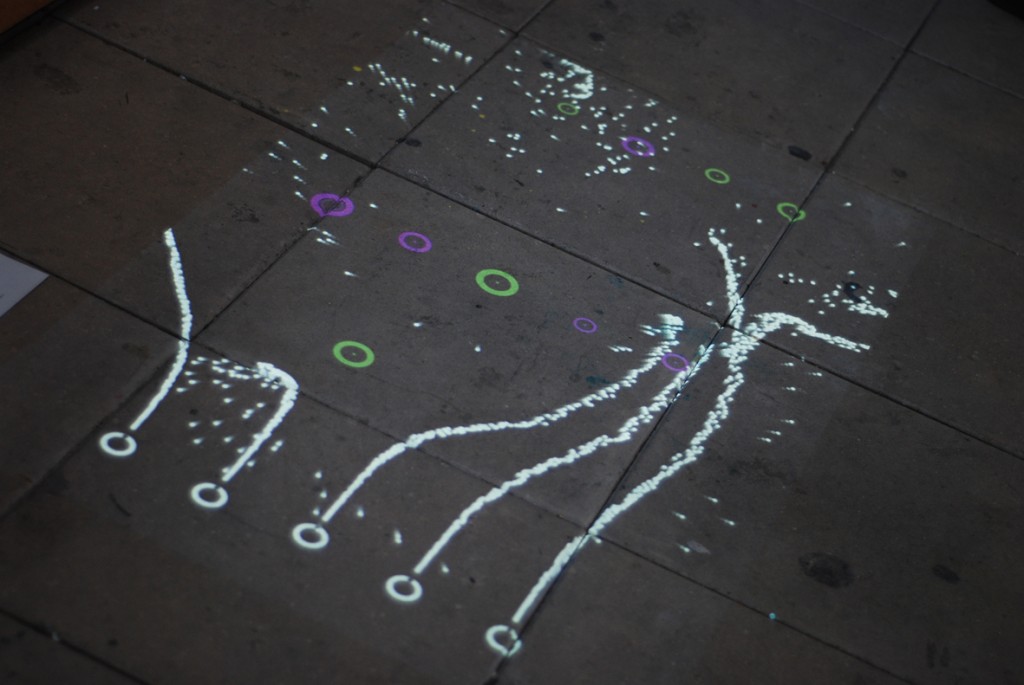
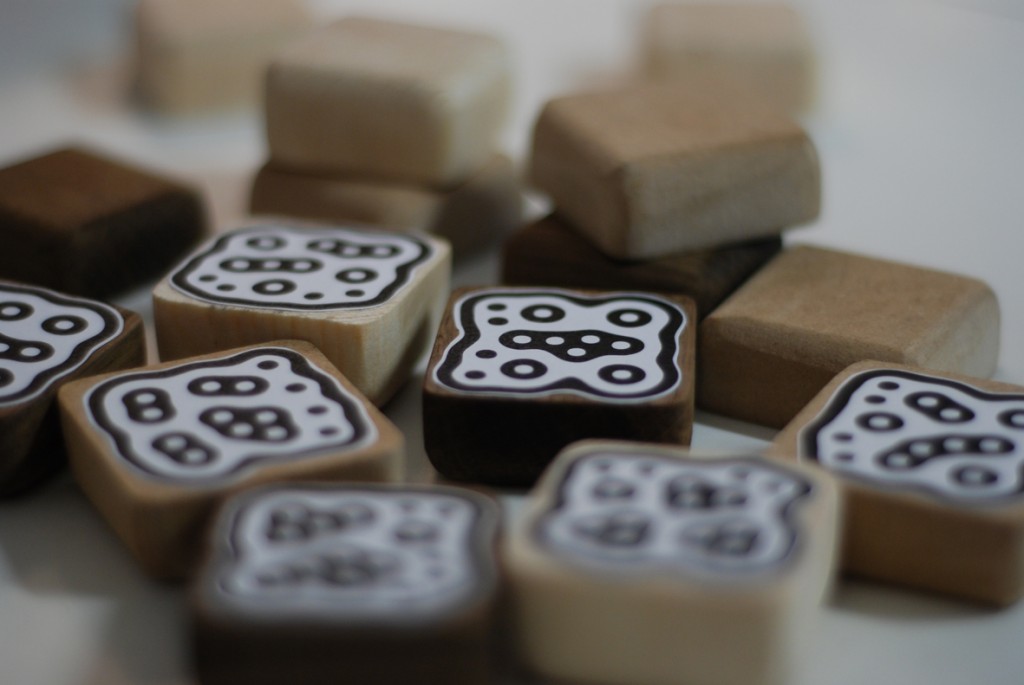



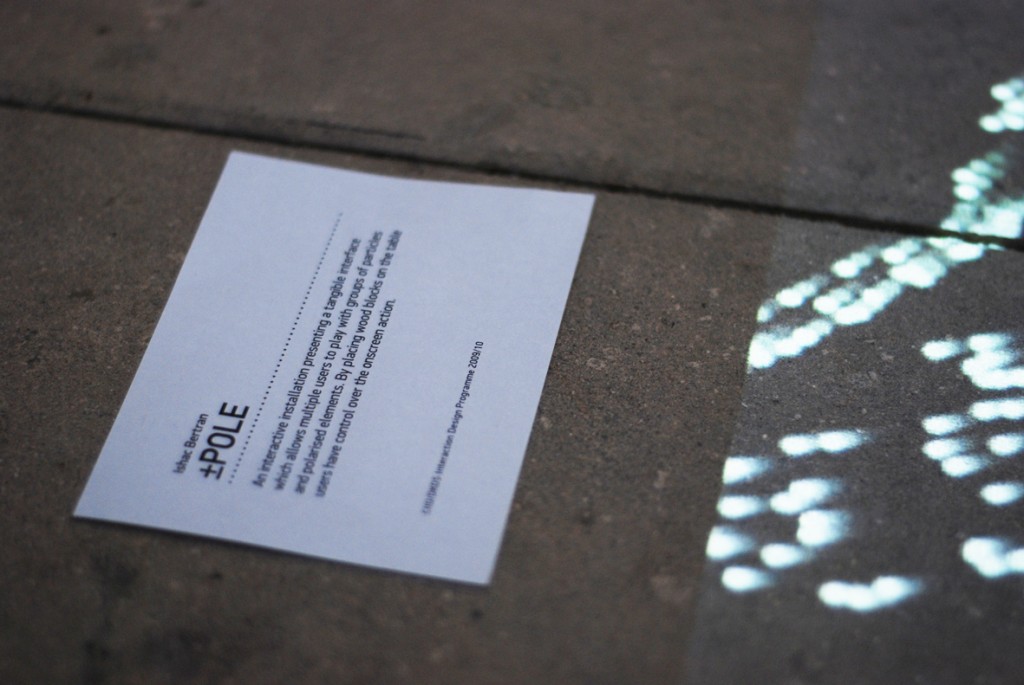

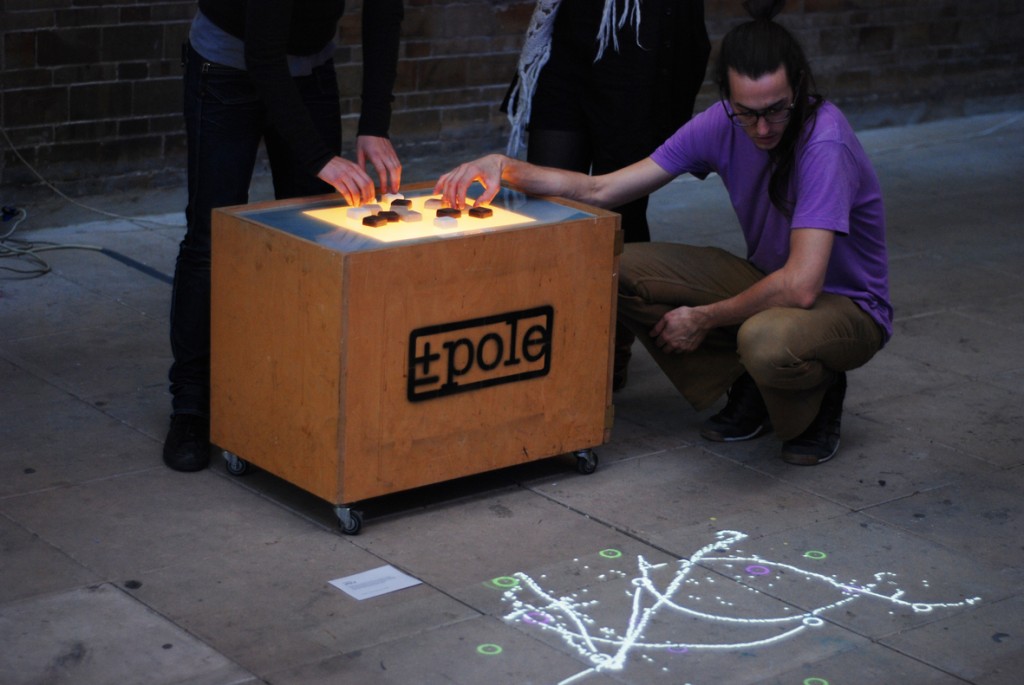
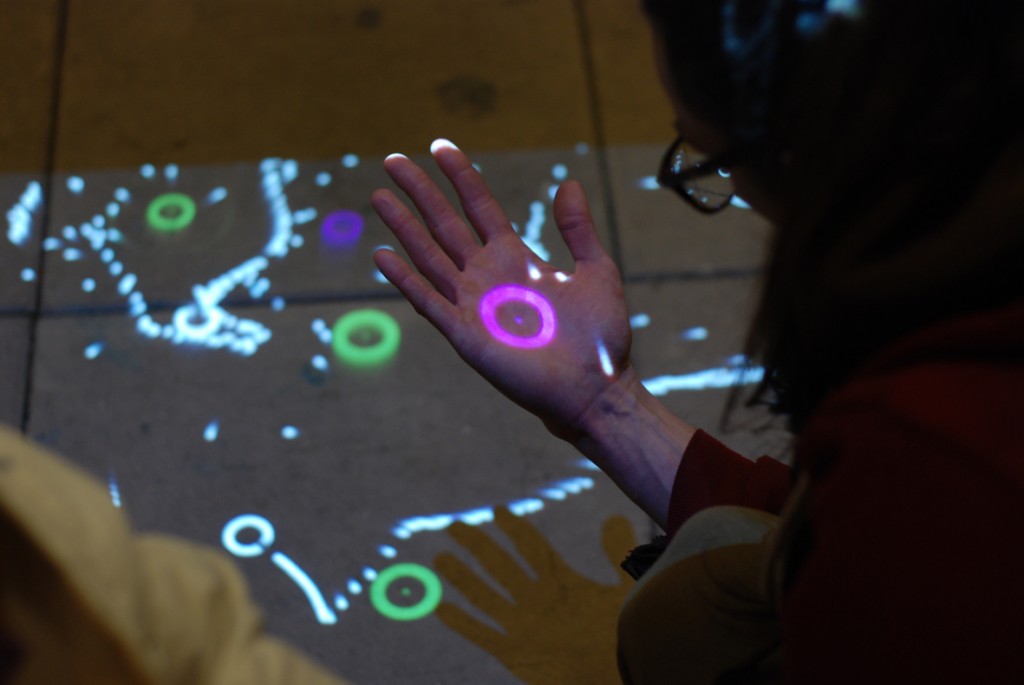
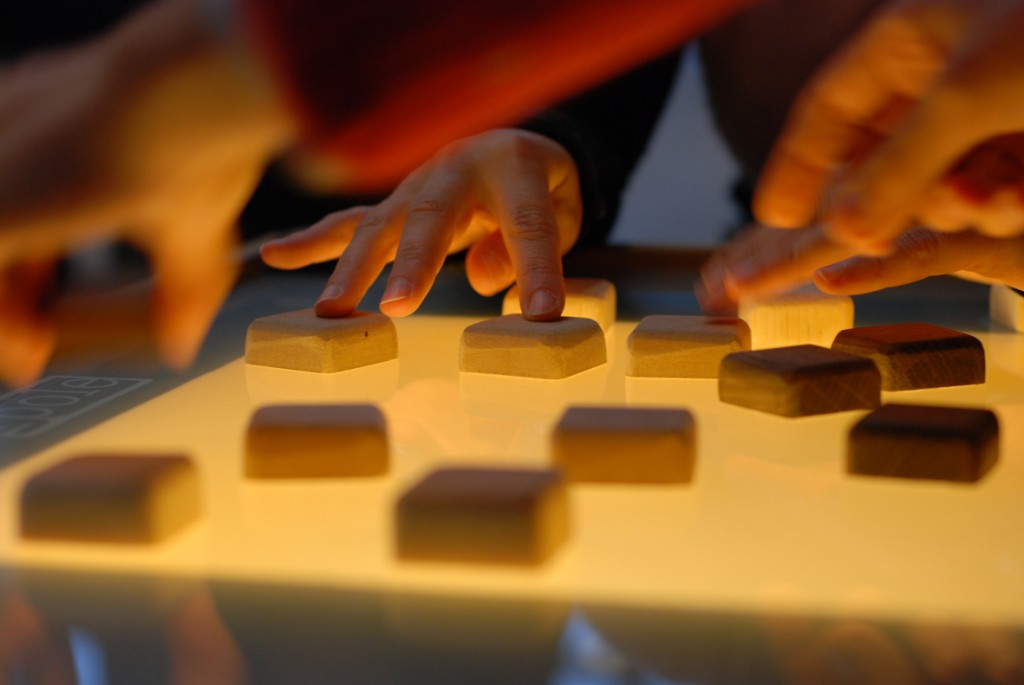
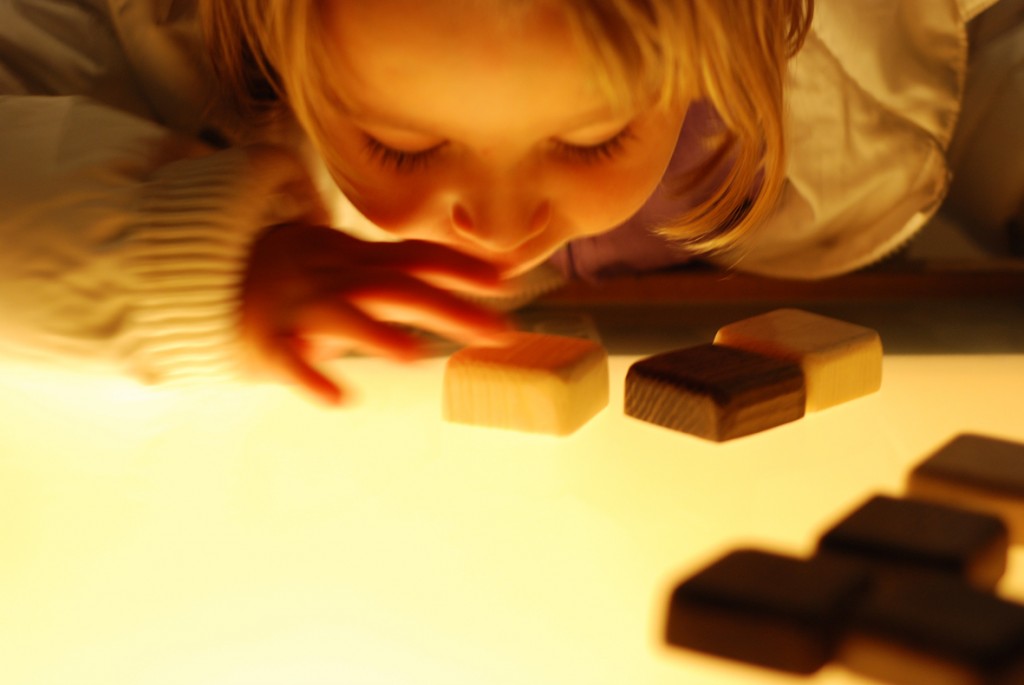
November 25th, 2009 at 12:30 pm
Espectacular! vull provar-lo!!!
December 30th, 2009 at 8:02 pm
[…] During the second week, we were tasked with creating a final project for the course, either in the form of an interactive program or installation, or a poster. Some people took the computer vision direction further, combining the input from a webcam with code in processing. Some of these displayed the image back, augmented with elements that reacted to the tracked faces. Others used things like Reactivision icons/codes to track objects in space, creating a tangible interface to an application – such as painting in mid-air (Eric) or the particle system shown below (Ishac – more on his awesome project here). […]
March 26th, 2012 at 2:21 am
I have to say that for the past couple of hours i have been hooked by the impressive posts on this website. Keep up the wonderful work.